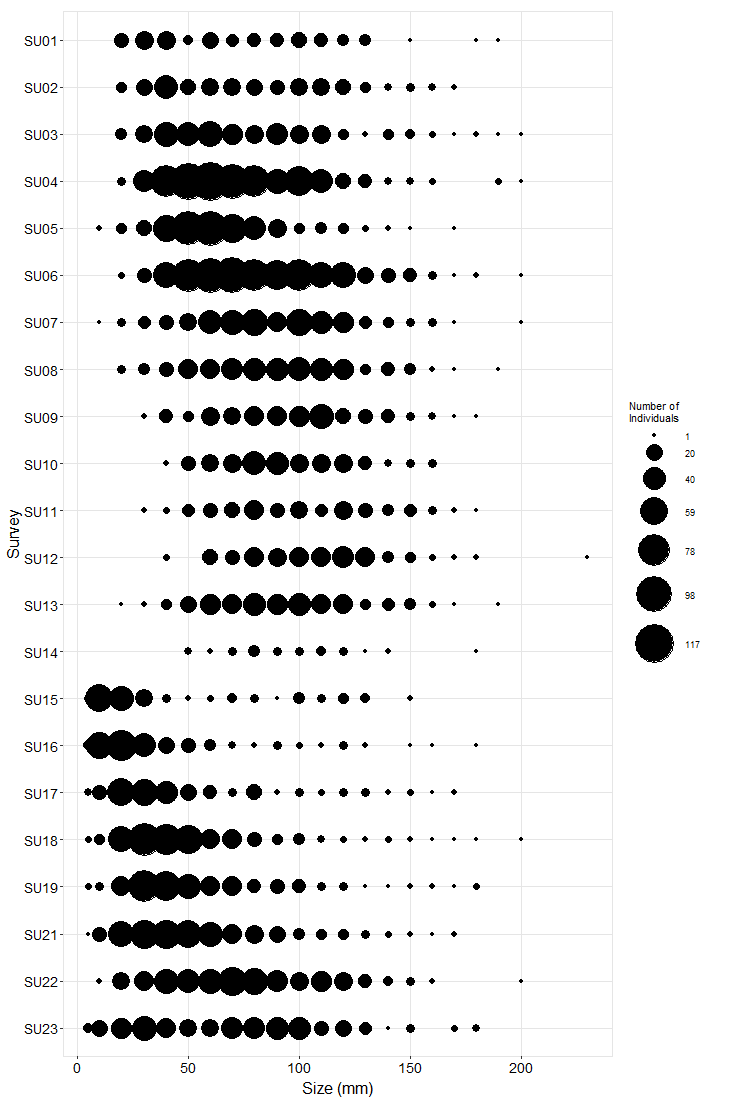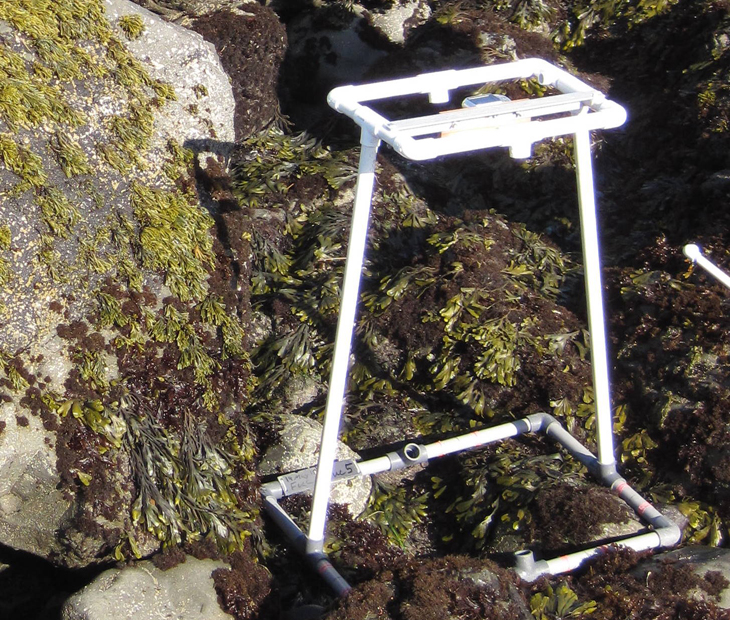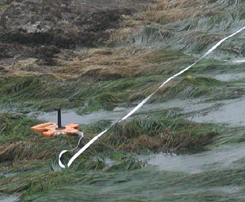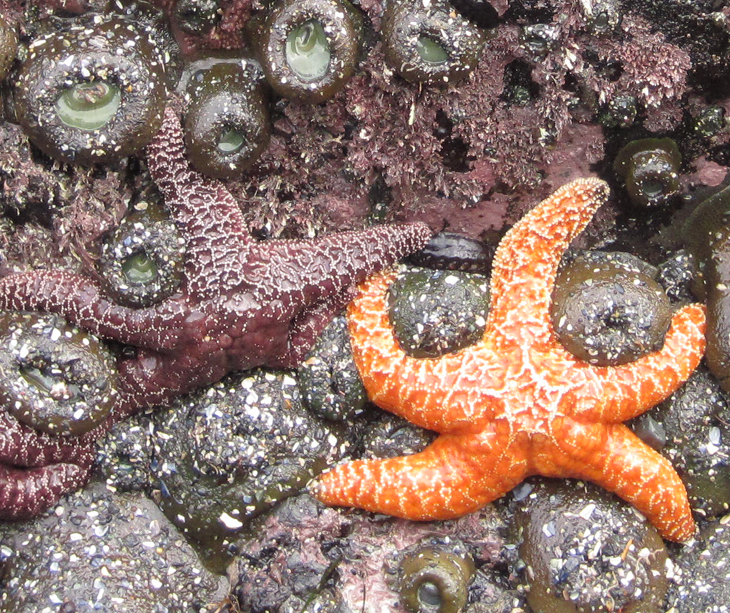Fogarty Creek Long-Term trends | MARINe
Fogarty Creek Long-Term trends
See below for trend graphs
In order to standardize species resolution across all MARINe groups, and over time, some species (typically rare) were lumped for graphical presentation of Long-Term monitoring data. See lumped categories for definitions (some variation occurs between methods and over time). Due to funding constraints, counts of motile invertebrates within plots at Oregon sites ended in 2012.
Barnacle cover in the barnacle plots at Fogarty Creek was generally above 80%, which is surprising given that this area is a popular location for seals to haul out. Balanus glandula were much more abundant than Chthamalus dalli/fissus in these plots. Mussel cover in Mytilus plots was high and quite stable over time. The mussel bed at Fogarty Creek is so extensive and deep that we typically cannot find our bolts and need to rely on measurements and photos to locate the plots. Fucus cover in rockweed plots fluctuated somewhat over time, but was generally around 60% or higher. Pelvetiopsis cover in its target plots plummeted after the initial survey, and remained low in all successive years. Barnacles were typically the most common taxa in these plots. The target plots for Neorhodomela contained high cover of this red alga through 2006, after which a slight but gradual decline in cover occurred. Two “overstory” species—the boa kelp, Egregia, and the surfgrass, Phyllospadix, increased in cover between 2008-2015, so it is possible that Neorhodomela was present under these species and had not declined substantially in cover. Neorhodomela plots have been photographed, but not sampled since 2015 due to a reduction in funding. Limpets and littorines were the most abundant motile species in all plot types, but the whelk, Nucella spp was also common in Mytilus and Fucus plots and the turban snail, Tegula funebralis was sporadically common in barnacle, Fucus, and Neorhodomela plots. Phyllospadix cover was high throughout the duration of the study.
Ochre star counts within our 3 permanent plots generally hovered between 200-400 for most years, but spikes of over 700 stars were counted in 2004 and 2006. Size class data shows that these spikes in counts span the 40-120 range, so the increases were likely due to movement of stars into the plots from offshore habitat, rather than recruitment of new individuals to the site. Ochre star numbers were down in 2014 due to Sea Star Wasting Syndrome but have been steadily recovering. As of 2019, counts were within the historical normal range, but size structure was still skewed toward smaller individuals. New recruits and juveniles appear to be surviving, as evidenced by the shift in size structure towards larger individuals. If this trend continues, we expect the ochre star population at Fogarty Creek to recover within a few years.
Photo Plots
Below are the trends observed for each Photo Plot target species at this site. Long-Term percent cover trend graphs also include any species that reached a minimum of 25% cover during any single point in time within a given target species assemblage. Breaks in trend lines represent missed sampling events. For additional species observed that did not meet this 25% threshold, please use the Interactive Map.
For motile invertebrate Species Counts, a mean across all plots was calculated, and only those species with a value of at least 5 individuals for at least one sample are shown. Due to time constraints, motile invertebrate counts have not been done at most sites since 2012. For motile invertebrate size trend graphs by site, please use the Interactive Map.
Chthamalus/Balanus (Acorn Barnacles) - percent cover
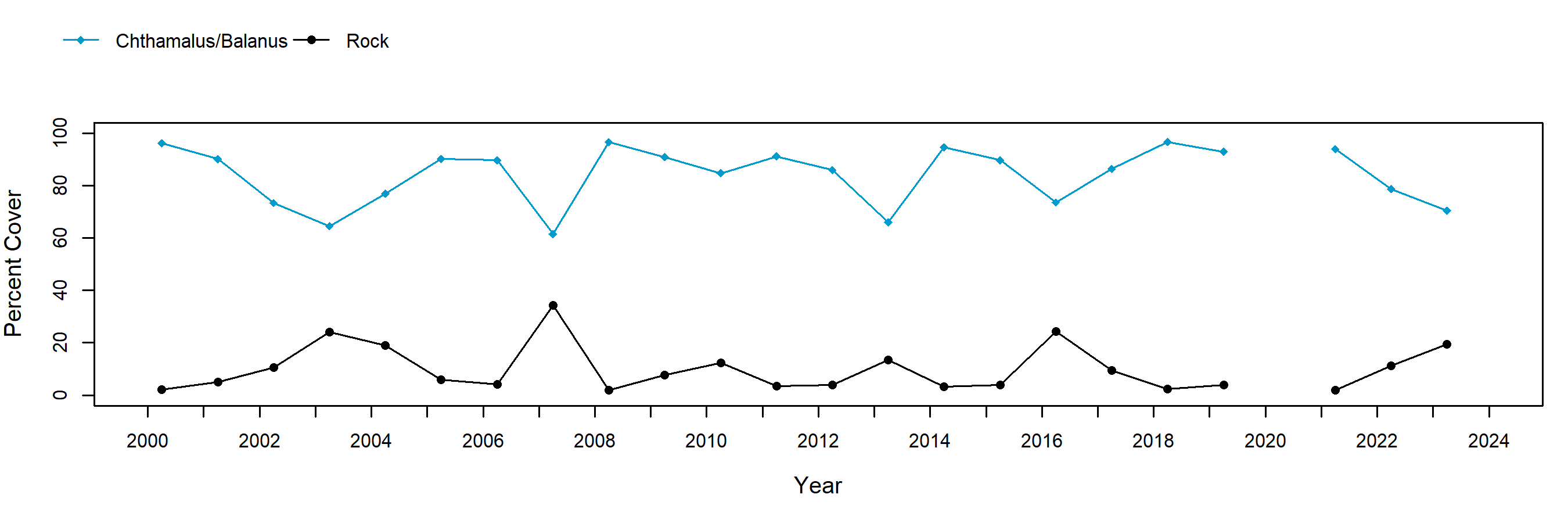
Chthamalus/Balanus (Acorn Barnacles) - motile invertebrate counts
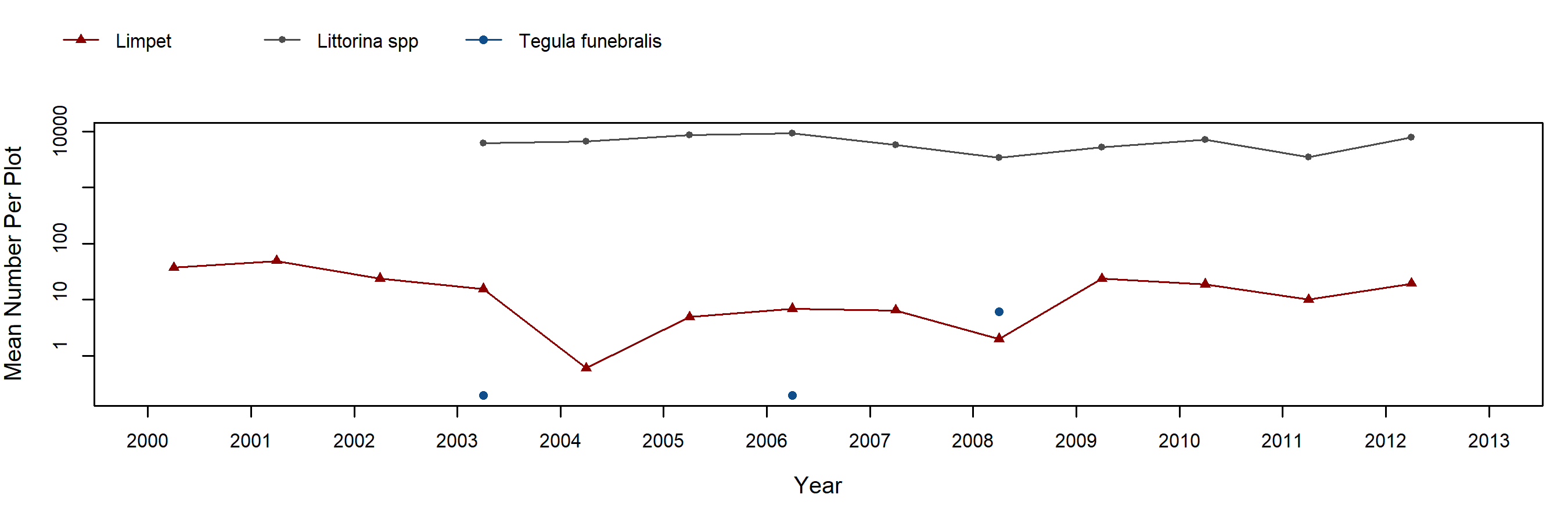
Mytilus (California Mussel) - percent cover
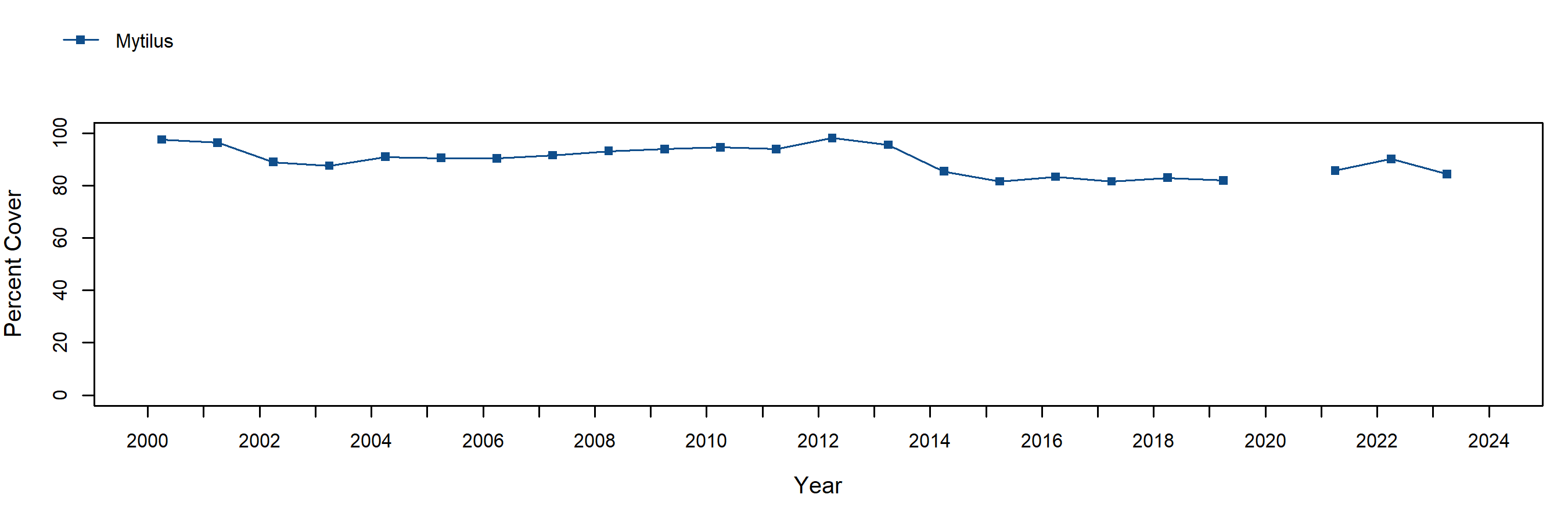
Mytilus (California Mussel) - motile invertebrate counts

Fucus (Northern Rockweed) - percent cover
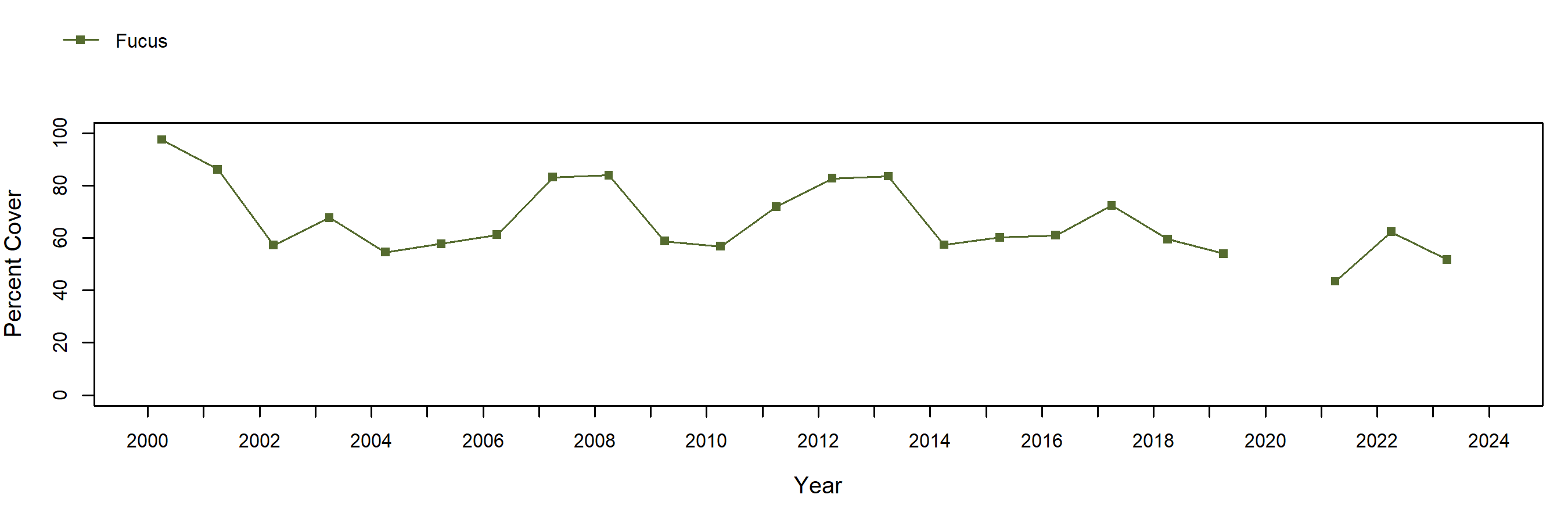
Fucus (Northern Rockweed) - motile invertebrate counts
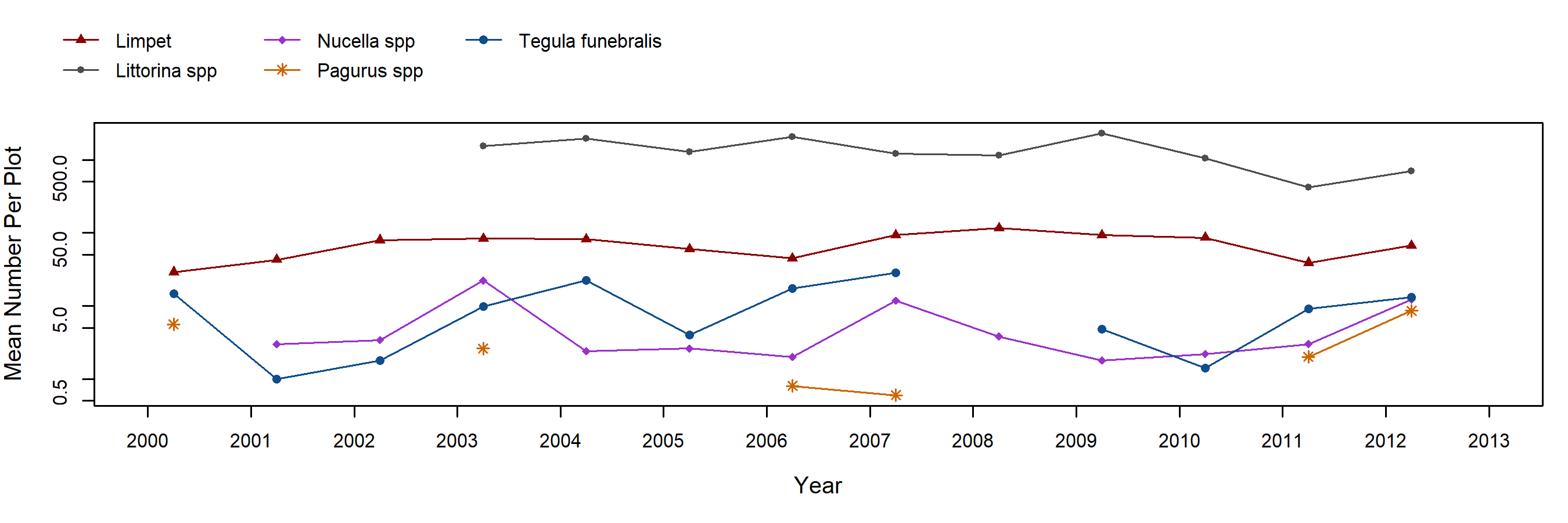
Pelvetiopsis (Dwarf Rockweed) - percent cover
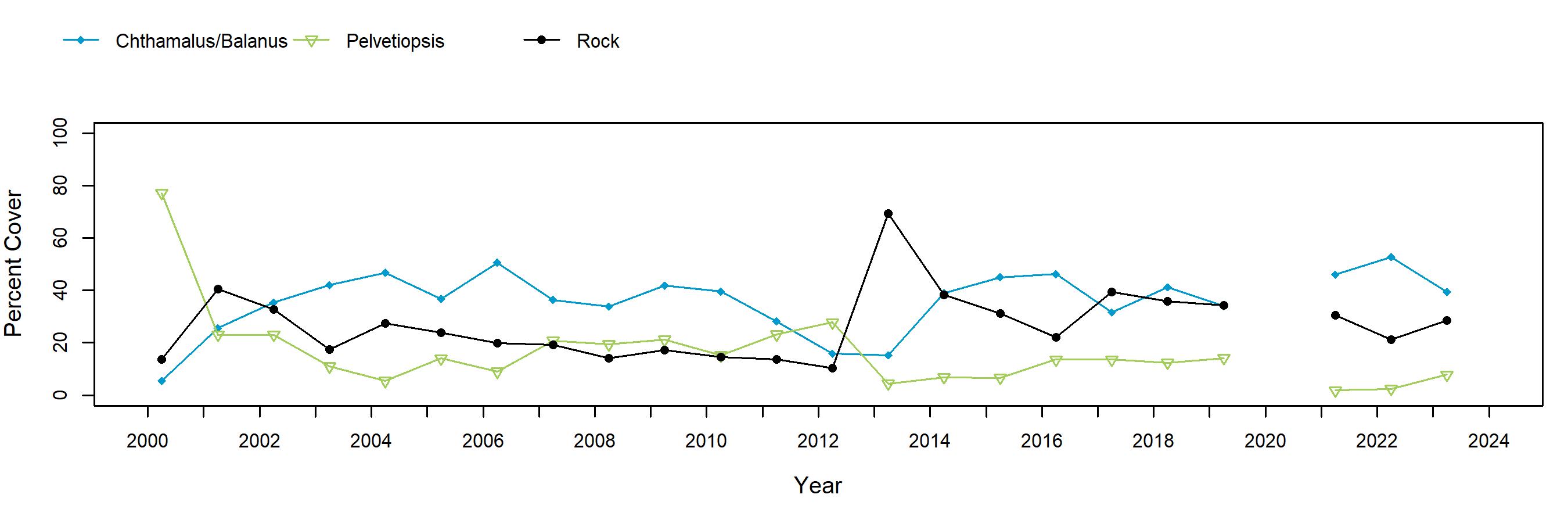
Pelvetiopsis (Dwarf Rockweed) - motile invertebrate counts
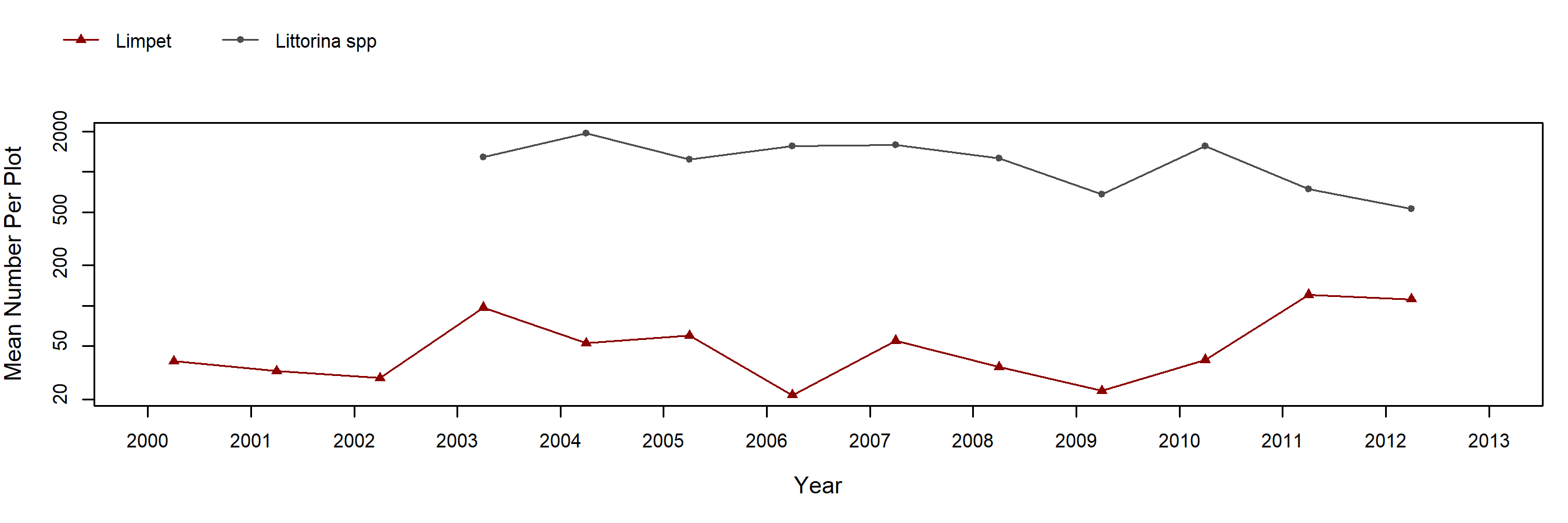
Neorhodomela (Black Pine) - percent cover
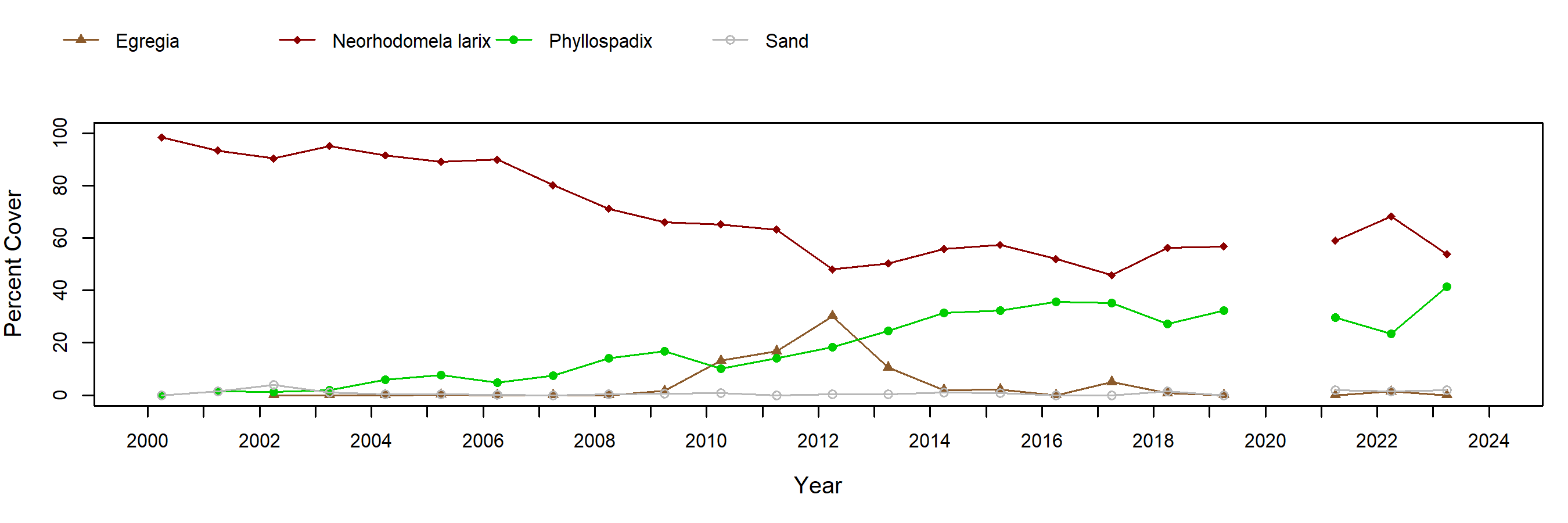
Neorhodomela (Black Pine) - motile invertebrate counts

Transects
Below are the trends observed for each Transect target species at this site. Long-Term trend graphs also include any species that reached a minimum of 25% cover during any single point in time within a given target species assemblage. Breaks in trend lines represent missed sampling events.
Phyllospadix (Surfgrass)
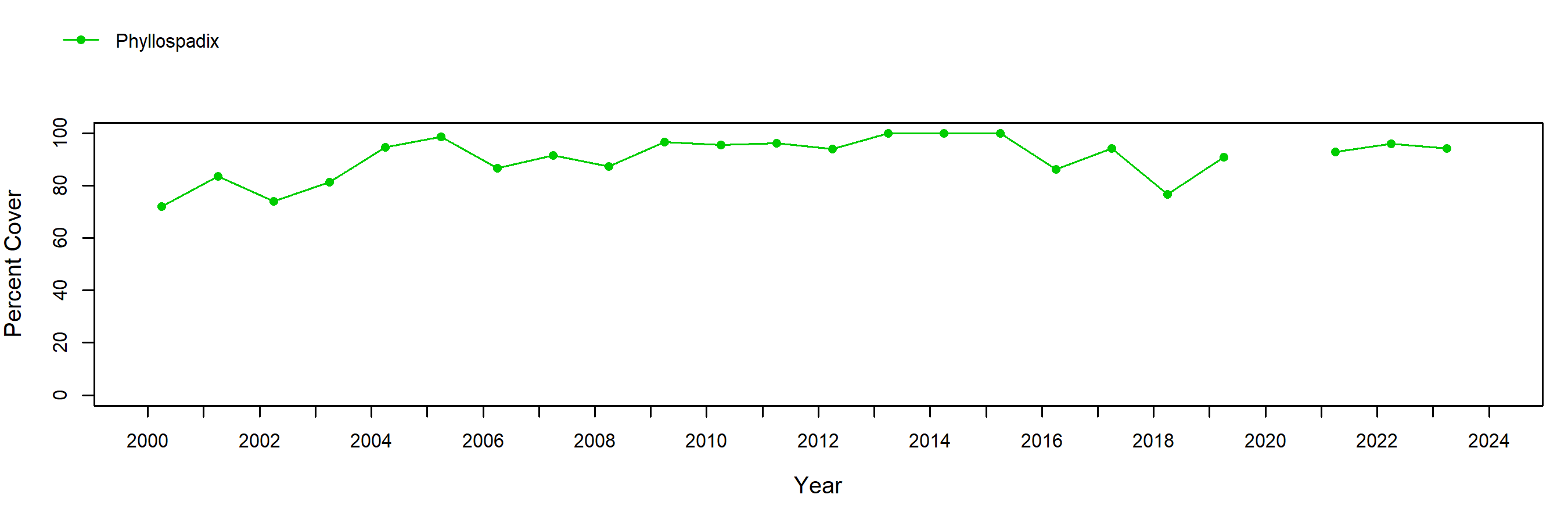
Species Counts and Sizes
Species Counts and Sizes (where recorded) for Pisaster are shown below for this site. At some sites, other sea star species and Katharina are counted in addition to Pisaster. The sum of all individuals across all plots is displayed. Note that data gaps are represented by breaks in long-term count trend lines, but are not shown in size plots.
Pisaster (Ochre Star) - counts
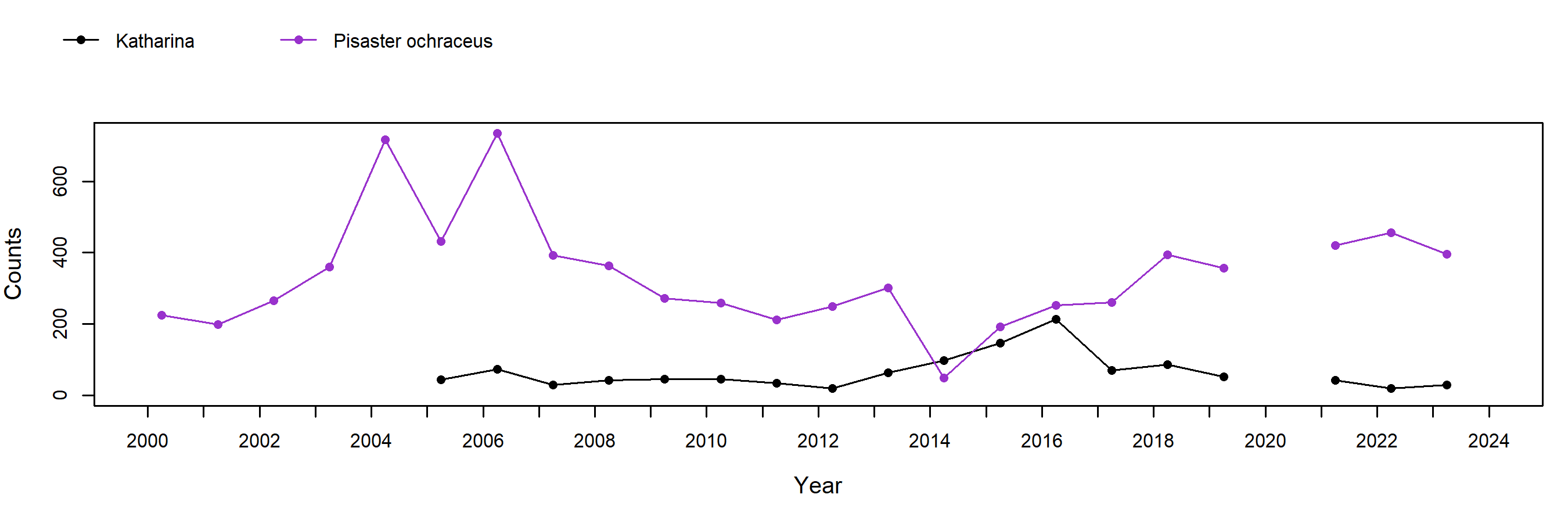
Pisaster (Ochre Star) - sizes
